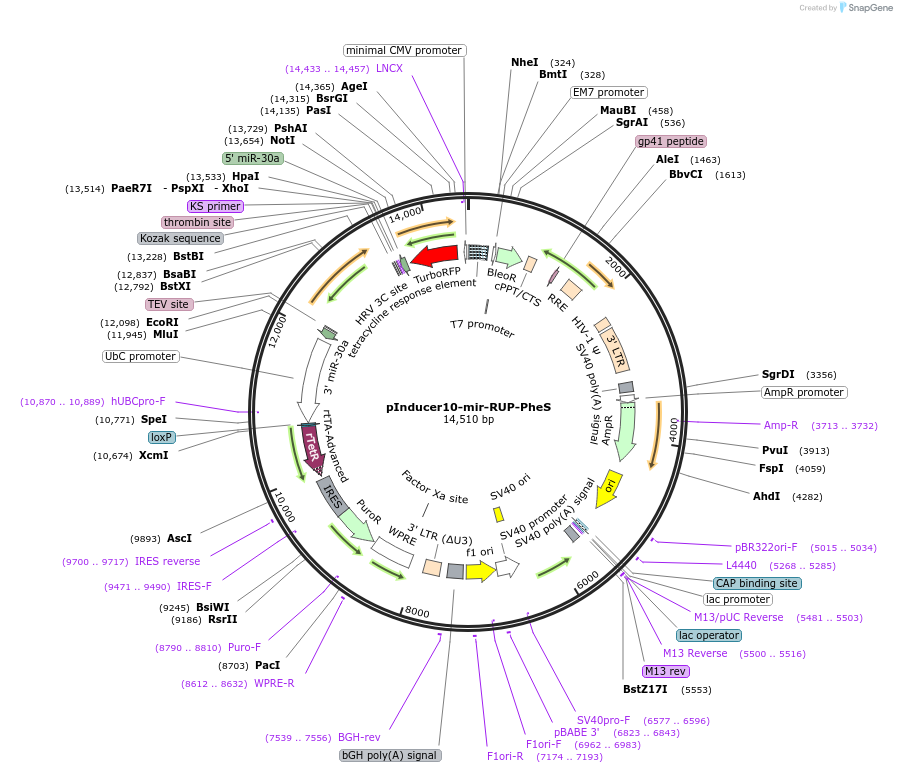-
PurposeLentiviral shRNA vector (pGIPz based) for inducible knockdown
-
Depositing Lab
-
Sequence Information
Ordering
| Item | Catalog # | Description | Quantity | Price (USD) | |
|---|---|---|---|---|---|
| Plasmid | 44011 | Standard format: Plasmid sent in bacteria as agar stab | 1 | $85 | |
Backbone
-
Vector backbonepGIPZ
-
Backbone manufacturerOpen Biosystems
- Backbone size w/o insert (bp) 13167
- Total vector size (bp) 14567
-
Vector typeMammalian Expression, Lentiviral
-
Selectable markersPuromycin
Growth in Bacteria
-
Bacterial Resistance(s)Ampicillin, 100 μg/mL
-
Growth Temperature37°C
-
Growth Strain(s)DH5alpha
-
Copy numberUnknown
Gene/Insert
-
Gene/Insert namePheS Gly294
-
Alt namePheS
-
SpeciesE. coli
- Promoter TRE2
-
Tag
/ Fusion Protein
- RFP (N terminal on backbone)
Cloning Information
- Cloning method Restriction Enzyme
- 5′ cloning site MluI (unknown if destroyed)
- 3′ cloning site BamHI (unknown if destroyed)
- 5′ sequencing primer LNCX_primer (Common Sequencing Primers)
Resource Information
-
Supplemental Documents
-
Addgene Notes
-
Articles Citing this Plasmid
Terms and Licenses
-
Academic/Nonprofit Terms
-
Industry Terms
- Not Available to Industry
Trademarks:
- Zeocin® is an InvivoGen trademark.
These plasmids were created by your colleagues. Please acknowledge the Principal Investigator, cite the article in which the plasmids were described, and include Addgene in the Materials and Methods of your future publications.
-
For your Materials & Methods section:
pInducer10-mir-RUP-PheS was a gift from Stephen Elledge (Addgene plasmid # 44011 ; http://n2t.net/addgene:44011 ; RRID:Addgene_44011) -
For your References section:
The pINDUCER lentiviral toolkit for inducible RNA interference in vitro and in vivo. Meerbrey KL, Hu G, Kessler JD, Roarty K, Li MZ, Fang JE, Herschkowitz JI, Burrows AE, Ciccia A, Sun T, Schmitt EM, Bernardi RJ, Fu X, Bland CS, Cooper TA, Schiff R, Rosen JM, Westbrook TF, Elledge SJ. Proc Natl Acad Sci U S A. 2011 Mar 1;108(9):3665-70. doi: 10.1073/pnas.1019736108. Epub 2011 Feb 9. 10.1073/pnas.1019736108 PubMed 21307310





